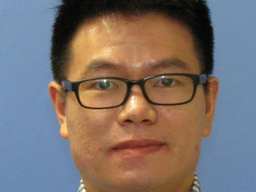Colloquium: Dr. Longlei Li | Cornell Univ.
In-Person PHYS 401
Location
Physics : 401
Date & Time
April 30, 2025, 11:00 am – 12:00 pm
Description
TITLE: "Advancing dust aerosol modeling: From emission processes to radiative effects”
ABSTRACT: Dust aerosols are suspended solid particles with a broad size distribution that play a major role in Earth’s climate system. They interact with radiation and other climate components across diverse spatial and temporal scales. Yet, their climatic impacts remain poorly quantified due to limited observational constraints and inadequate representation in current Earth System Models (ESMs). Unlike purely scattering aerosols such as sulfate and sea salt, mineral dust both scatters and absorbs solar and terrestrial radiation. The net radiative effect of dust depends on the balance between these two processes, which is influenced by factors such as mineralogical composition, size distribution, atmospheric loading, vertical distribution, and surface albedo. My research integrates observational data, including high-resolution surface mineralogy from NASA’s EMIT mission, inverse modeling, and global aerosol-climate simulations to improve the representation of mineral dust in an ESM that explicitly resolves mineralogical components. Through this integrated framework, I address key uncertainties in dust life cycle modeling and the quantification of its radiative effects. My work highlights the importance of combining next-generation remote sensing with process-based modeling to advance understanding of dust-climate interactions and to improve the fidelity of future climate projections.
ABSTRACT: Dust aerosols are suspended solid particles with a broad size distribution that play a major role in Earth’s climate system. They interact with radiation and other climate components across diverse spatial and temporal scales. Yet, their climatic impacts remain poorly quantified due to limited observational constraints and inadequate representation in current Earth System Models (ESMs). Unlike purely scattering aerosols such as sulfate and sea salt, mineral dust both scatters and absorbs solar and terrestrial radiation. The net radiative effect of dust depends on the balance between these two processes, which is influenced by factors such as mineralogical composition, size distribution, atmospheric loading, vertical distribution, and surface albedo. My research integrates observational data, including high-resolution surface mineralogy from NASA’s EMIT mission, inverse modeling, and global aerosol-climate simulations to improve the representation of mineral dust in an ESM that explicitly resolves mineralogical components. Through this integrated framework, I address key uncertainties in dust life cycle modeling and the quantification of its radiative effects. My work highlights the importance of combining next-generation remote sensing with process-based modeling to advance understanding of dust-climate interactions and to improve the fidelity of future climate projections.
